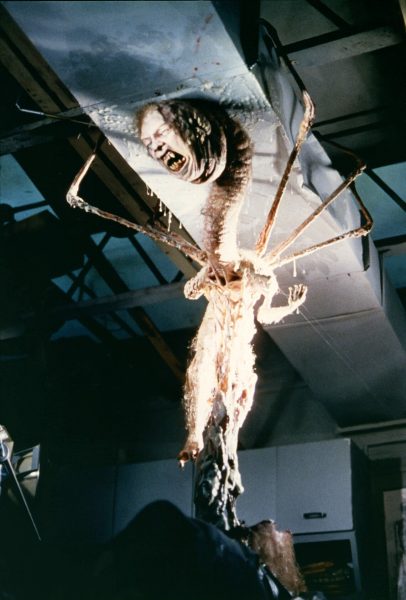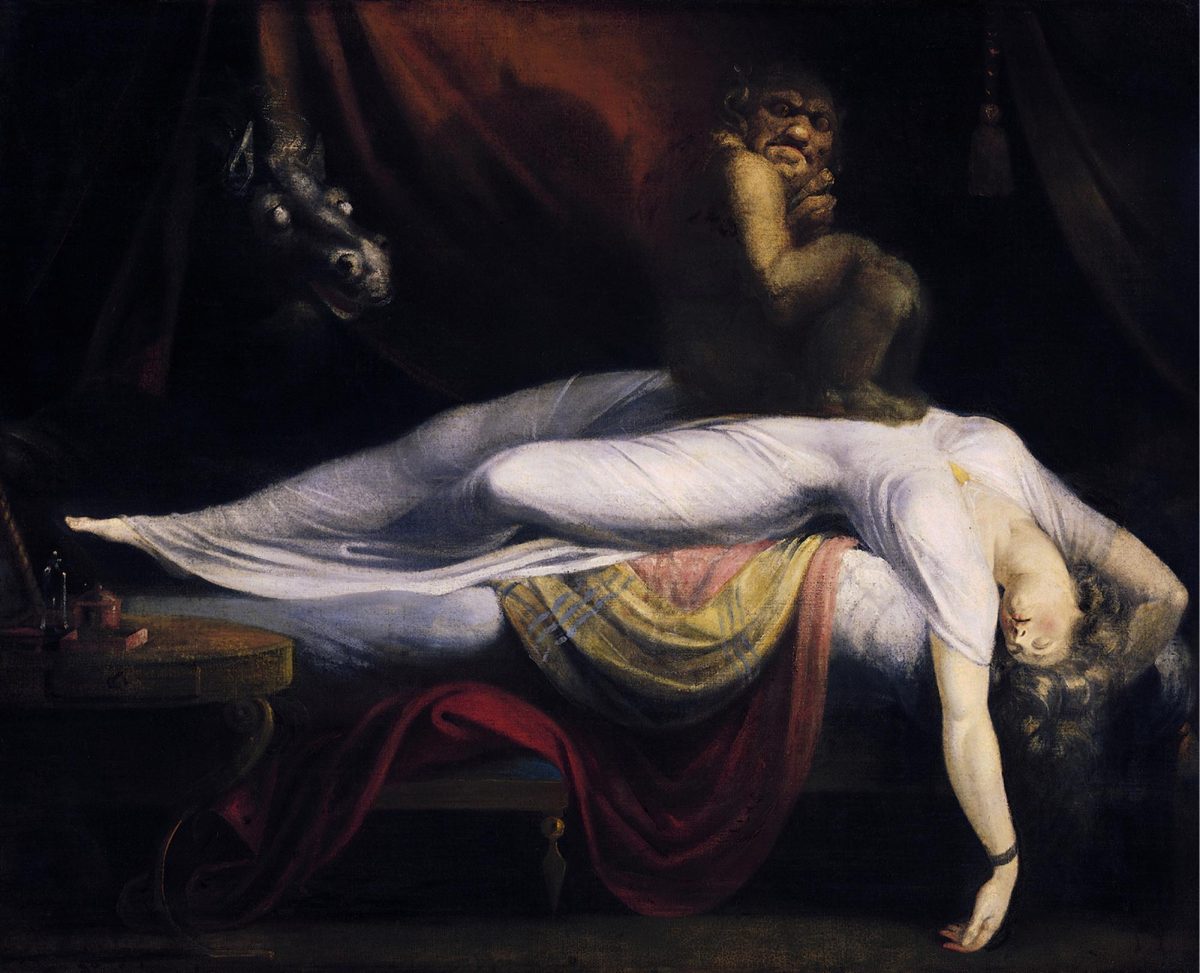Everybody seems to love the exhilaration of being frightened. Since ancient times, humanity has been fascinated with finding a cunning and innocuous use for the oldest and most primordial emotion, fear. From simple folktales of monsters coming to eat young troublemakers, to horror as entertainment in modern times, through terrifying movies with masked killers, vengeful spirits, and rampaging extraterrestrials — all have worked in the past. With Halloween right around the corner, let’s take a look at the evolution of horror.
The genre of horror is quite successful, because humans are naturally attracted to the thrill of being terrified. With well known hormones such as adrenaline and dopamine being released while scared, the process that occurs in the body of somebody who is afraid is much more complicated than one could assume.
Adrenaline is one of the hormones released as a reaction to being scared or nervous. It is an evolutionary adaptation that focuses on preparing the body to react against any danger by raising the heart rate, blood circulation, and breathing.
Dopamine is the second most important hormone released in a reaction to being afraid; however, it is the most important hormone that explains why people enjoy the thrill of being frightened. Dopamine is a hormone that is also released in positive encounters, making one happy. This could explain why people are so keen on being frightened. It is due to these hormones that things like roller coasters and bungee jumping are so effective in entertaining and bringing people pleasure. This is also why horror as a genre is so successful, as it increases the release of positive hormones.
The first examples of horror arose in the eighteenth century in the form of the gothic genre. An aesthetic surrounding the topics of fear and hauntings, many pieces of art and literature were produced with the gothic genre in mind. The style was first established in 1764 by Horace Walpole and his novel, The Castle of Otranto. This defining piece of horror literature is an unusual and eerie tale that follows the protagonist and lord of the castle, Manfred. His quest to avoid an ancient prophecy through the abnormal act of marrying a woman named Isabella, the fiancé of his recently deceased son, and producing another male heir with her is the basis of the story.
Like many early works of gothic literature, The Castle of Otranto uses themes of religion, philosophy, and morality while often featuring humanity’s battle against unnatural forces of evil, whether it is supernatural or man-made horrors born of science. In the case of The Castle of Otranto, the evils that torment our protagonist are most definitely supernatural, with the interior of the castle appearing to become more distorted by deceased members of Manfred’s family. Alfonso, becomes more desperate in his scheme to avoid the prophecy set upon him, which causes him to resort to more diabolical measures as the story progresses.
The Castle of Otranto is known for its inspiration of a horror trope that is still commonly used in modern horror cinema, despite being written centuries ago — that of poltergeists. In ‘ghost lore,’ poltergeist is the name given to a chaotic ghost or spirit that is characterized by its intent to cause physical disturbances, such as moving objects or making loud noises. In The Castle of Otranto, Manfred has encounters with multiple poltergeists; some minor instances such as moving pictures and doors opening and closing alone occur, to the most extreme being the appearance of a literal giant knight.
Although Walpole’s The Castle of Otranto marks the beginning of a genre that would eventually evolve into modern horror today, it is unfortunate that it is almost completely overshadowed by another masterpiece of gothic literature, Mary Shelley’s debut 1818 novel, Frankenstein: The Modern Prometheus, more commonly known as just Frankenstein; its contents are much closer in comparison to modern instances of horror. Despite it being more than two centuries since the publishing of Frankenstein, Shelley’s novel has had a lasting impact on not just the genre of horror, but on entertainment as a whole. Upon being asked about Frankenstein, Briana Nikci ’25 visualized a “green man with a big forehead,” which is how Frankenstein’s monster is portrayed in pop culture, not in the book.
With Frankenstein playing a pivotal role in the uprising of the horror genre, it is good to consider the overall message of the original novel by Mary Shelley. Frankenstein truly represents the gothic genre’s ability to utilize fear to cover topics shrouded in angst and confusion, covering the topic of the possible dangers in scientific exploration and technological advancement, which was actually something that was occurring at the time it was written. The themes mentioned before are seen in the plot, which many are familiar with despite not considering themselves to be horror fans, further cementing Frankenstein’s place in pop and horror culture.
In Frankenstein, a mad scientist named Victor Frankenstein succeeds in creating artificial life. Frankenstein’s monster initially seeks affection, but Victor’s neglective behavior towards it would cause it to embark on a destructive rampage. Although Frankenstein is an inherently unsettling novel with unnerving content, the novel contains metaphors for a considerable amount of real issues that still affect modern society. Some allegories are the negative effects of scientific discovery, represented by the death and destruction caused by the monster’s rage, the dangers of failing to raise a child properly, seeing how the monster was originally innocent and not looking to cause any sort of harm.
Considering its humble beginnings, it is interesting to see how the purpose of horror shifts from discussing topics surrounded in fear and controversy to evolving with the role of entertainment only. Horror cinematography is the best known form of horror entertainment nowadays, with the first motion-picture ever being a three minute short film called “Le Manoir du Diable,” which roughly translates to “The Haunted Castle” or “The House of the Devil.”
Although “Le Manoir du Diable” was not originally supposed to scare audiences, it is credited with being the first film to bring the supernatural to the silver screen. The plot focuses on a magical cauldron that gives rise to animated skeletons, ghosts, transforming bats, and other monsters, with all of the aforementioned being associated with horror today. The film was surprisingly successful, and after its release there was a period of time from 1900 and 1920 in which filmmakers attempted to produce more cinematography themed around the newborn genre of the supernatural.
However, this challenge proved to be difficult for filmmakers, seeing how the genre was so new with very little material to work with. This led filmmakers to Victorian era gothic literature. Filmmakers could use classics in the gothic style as source material for their films, in which they would produce film adaptations of the most famous works of gothic literature. Skilled adaptations include Mary Shelley’s Frankenstein (there are about 80 adaptations of the novel) and Robert Louis Stevenson’s The Strange Case of Dr. Jekyll and Mr. Hyde. The genre exploded in popularity, with countless people reveling in the thrill of watching the films for the mysterious, and notably, the frightening feelings evoked. The following decades saw a remarkable increase in filmmakers attempting to frighten their audiences, with more fans of horror accumulating, multiple clichés emerged.
The 1970s and the 1980s are often considered to be when the greatest horror cinema was produced; it was also when horror directors began taking it upon themselves to increase the scare factor for their audiences, intensifying the insanity of what they produced with the intent to frighten. A personal favorite horror movie from the 70s and 80s is John Carpenter’s The Thing. With horror cinema in the 1970s and ’80s being plagued by an overabundance of cheesy slasher films – a cliché in horror which a usually masked killer harasses and murders a group of people – such as Halloween and Friday The 13th, John Carpenter’s The Thing does not exude the same brainless thrill of Jason Voorhees bloodily butchering a victim. It is a movie that revels in using a person’s built-in psychological fears to create unease.
In The Thing, a group of American researchers in an Antarctic base encounter the film’s namesake, ‘The Thing’; an incredibly dangerous shapeshifting extraterrestrial lifeform that “assimilates, then imitates” other organisms. The cast must overcome feelings of paranoia and distrust, due to the fact that they are completely trapped with each other, ‘The Thing’ being one of them in disguise. The film does an incredible job of scaring its audience in ways not commonly seen in modern horror films. The Thing is notable for its lack of action throughout its runtime of 1 hour and 49 minutes, making every time the shapeshifter reveals itself much more terrifying. The masterful usage of practical effects in The Thing’s absolutely hideous and disgusting transformation in appearance on screen and the manipulation of the natural human fear of paranoia and the unknown all work to make this movie a cult classic. There will never be another movie like John Carpenter’s The Thing, given that the target audience of horror movies is rapidly transitioning from adults to teenagers.

Today, a majority of people enjoy the thrill of watching a horror movie, though many older generation horror fans express their disappointment in the apparent deterioration of the genre. Works of horror are transitioning from masterful psychological manipulation in order to unnerve the audience to cheap ‘jumpscare’ shows (a ‘jumpscare’ is a technique in which an abrupt change in image and sound scares the viewer by catching them off guard). However, even with this deterioration, there are still some diamonds in the haystack. Adrianna St. Clair ’25, a horror movie enthusiast, said that “Us is my favorite horror movie! The soundtrack and facial expressions of a lot of the characters are really unsettling.”
According to many students at Bronx Science whom I interviewed, The Conjuring is another fairly recent horror movie that is absolutely terrifying and a favorite amongst our student body. Both are worth watching if you are brave enough to. With the horror genre being something that is ever changing, it is a true curiosity to see what is next for the genre. It will also be incredibly interesting to see how current trends in the world influence the genre of horror.
Considering its humble beginnings, it is interesting to see how the purpose of horror shifts from discussing topics surrounded in fear and controversy to evolving with the role of entertainment only.

